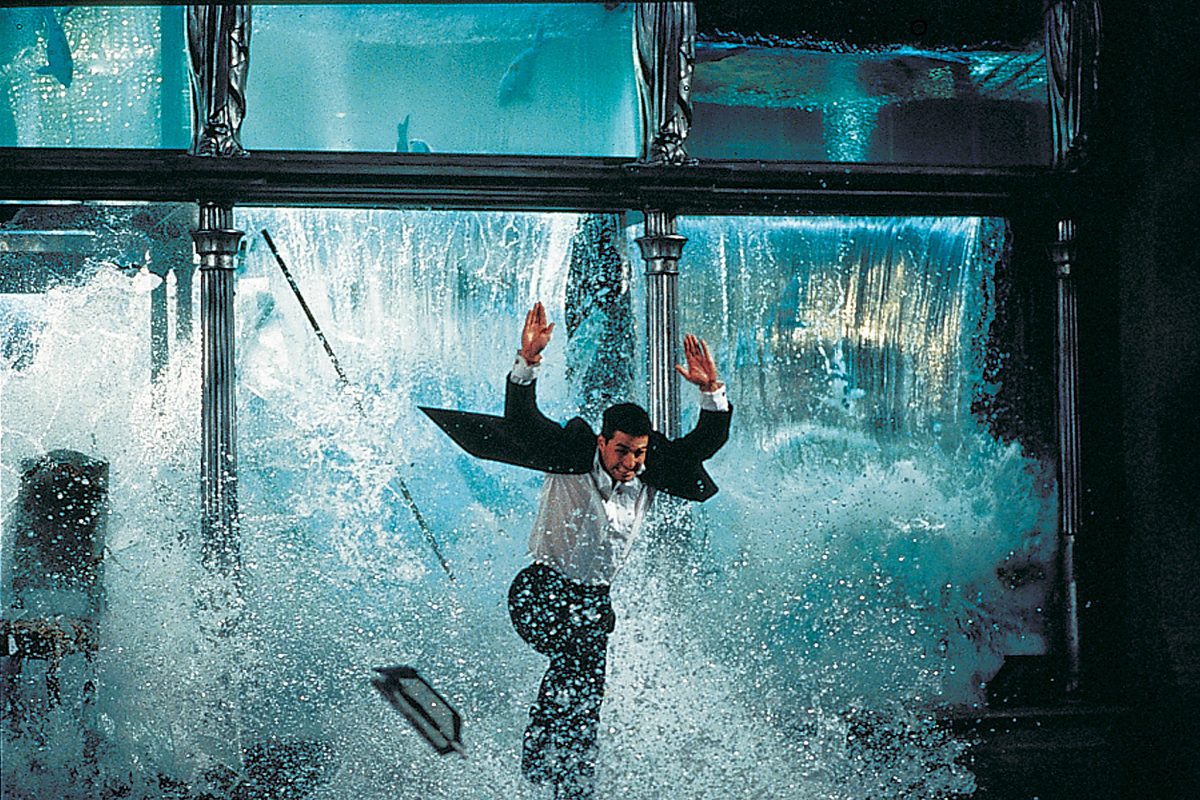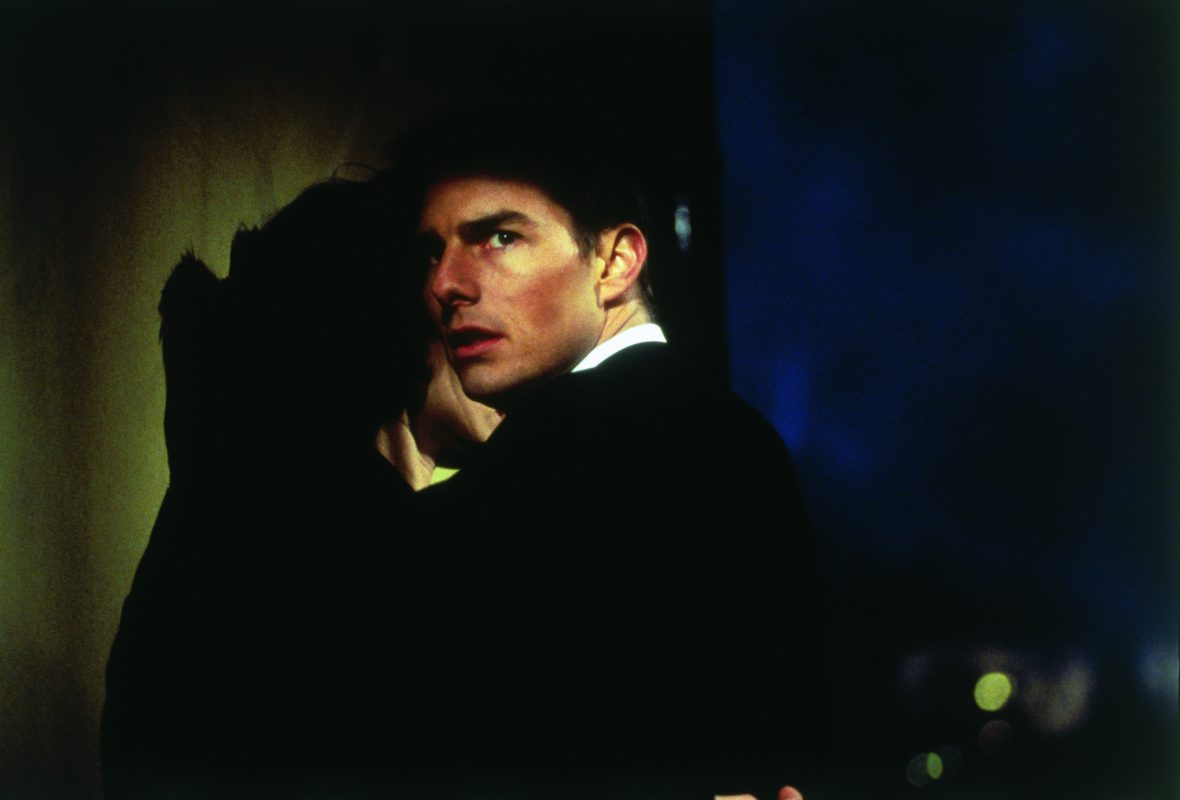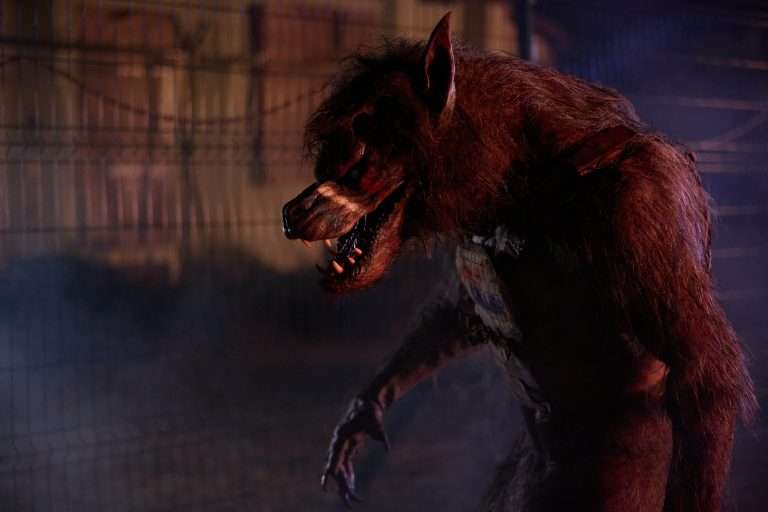Being a cinephile doesn’t always mean gravitating toward slower rhythms of cinema, where form and craft tower above the currency of narrative. Sometimes, it’s also about seeing that mainstream, big-budget cinema has never been a monolith of recycled tropes built purely for crowd-pleasing. To see a blockbuster for what it actually is offers its own kind of joy. When I first watched “Mission: Impossible” (1996)—Brian De Palma’s franchise-starter based on the ’60s TV series and its sequel from the 80s—I was taken by the film’s sultry style and sophisticated elegance. Skepticism about substance came in handy. Whenever the plot thickened, a robust defence mechanism kicked in like a protective coating over my senses. The result was a film that felt charming and flabby, often in the same breath.
But revisiting it now reveals a beloved ’90s classic, unbothered by the usual discourse about genre limitations or narrative inadequacies. The film, which became one of the key pillars upholding the towering charisma of the man we fondly call the last movie star—Tom Cruise—elevates its high-voltage American espionage drama with razor-sharp attention to detail; details that spring off the screen in rhythmic bursts. Much of that comes from the aesthetic grammar—the seethe and slickness of the iconic Langley heist, the microcosm of sadness smudged onto a who-gives-a-fuck canvas, the grandeur of Ethan Hunt’s narrow escapes from death, and the sheer orchestration of it all.
But there’s also a lot of meat in the plot, grafted onto the film’s glossy exterior with the same gravitas as a traitor plotting an inside job. These edges may not offer profound food for thought. But they forge a rare, inextricable link between eye-candy and soul-food. And watching the theatrics of a crisp, entertaining old-Hollywood drama unfold with such precision carries its own kind of subtle wisdom. Here’s an attempt to break that down for you all.
Mission: Impossible (1996) Plot Summary & Movie Synopsis:
What sets the plot in motion?
Even before the title card hits, we watch IMF agent Jim Phelps and his team wrap up a mission in Kiev with mechanical precision. On the flight home, Jim is briefed about a new assignment in Prague: he and his team are to intercept rogue agent Alexander Golitsyn, who plans to steal the CIA’s NOC (non-official cover) list—an encrypted document containing the identities of all undercover agents operating in Europe. Jim maps out the mission in detail, warning the team about the risks of disavowal.
The job will need disguises, quick turnover, and absolute discretion. But the plan collapses mid-operation—Jack, the security systems guy, gets killed; Hannah, the surveillance expert, is eliminated; Sarah, the infiltrator, goes down; and Jim is seemingly shot on a bridge. The only survivor is Ethan Hunt, Jim’s pointman, who places a frantic call to IMF director Eugene Kittridge to report the catastrophe. Kittridge tells him to meet in an hour.
Why does Kittridge suspect Ethan might be the mole?
At the restaurant debrief, Kittridge reveals that another IMF team had been shadowing them all along. The mission was a decoy, designed to flush out a mole working within the IMF, with Golitsyn playing along. The mole is believed to be linked to an arms dealer named “Max,” under an operation codenamed “Job 314.”
As Kittridge begins to imply that Ethan might be the traitor, Ethan detonates a plastic explosive disguised as chewing gum—Jack’s parting gift—and makes a wild escape. He returns to the Prague safehouse, rattled and exhausted. On the computer, Ethan digs deeper. “Job 314” leads him to a Bible verse—Job 3:14—confirming that “Job” is the code name of the mole. Just then, Claire, Jim’s wife, arrives. She had faked her death during the mission, claiming that Jim warned her they’d been compromised, so she bailed before things went south.
How does Ethan make contact with Max?

Through the Bible login on the computer, Ethan makes contact with Max and proposes a secret meeting. There, he warns her that the NOC list Golitsyn stole is a fake, rigged with a tracker, and that the real one is locked away in Langley. Max doesn’t entirely buy it and refuses Ethan’s demand of $150,000. But before they can part ways, Kittridge’s team storms the place. Ethan and Max barely escape. Kittridge, unfazed, mutters about how these guys are trained to disappear and tells Agent Barnes to dig into Ethan’s personal life and exploit it. Meanwhile, Max, now convinced by Ethan’s gambit, agrees to pay $10 million for the actual list and the identity of Job.
Who helps Ethan steal the real NOC list?
To pull it off, Ethan and Claire bring in two disavowed IMF agents: Luther Stickell, a codebreaker, and Franz Krieger, a pilot. Though reluctant at first—the job’s madness is obvious—they sign on for the money and the stakes. The team infiltrates CIA headquarters at Langley, where Hunt and Krieger penetrate a hyper-sensitive vault that’s both sound- and temperature-triggered.
In an elaborate, nail-biting sequence, they steal the real NOC list. The crew flies to London. That evening, Krieger pockets the magneto-optical disk and demands to be present at any meetings Ethan holds. However, Ethan tricks him with a decoy disk and retrieves the real one. He then hands the list over to Stickell for safekeeping. When Luther asks why he’s being trusted, Ethan shrugs it off: if Luther knew what he was chasing, he wouldn’t have joined in.
Mission: Impossible (1996) Movie Ending Explained:
How does Ethan figure out Jim is Job?
Meanwhile, Kittridge has Ethan’s mother and uncle falsely arrested to bait him. Ethan learns of it from a news report, and something else catches his eye. The Bible in the safehouse, the one used to access Max, was stamped with a label from the Drake Hotel in Chicago, where Jim had previously been stationed. Ethan phones Kittridge from a pay booth, deliberately allowing the call to be traced. Then Jim Phelps suddenly reappears. He claims he survived the shooting and insists Kittridge is the mole. But Ethan, already tipped off by the Bible, knows the truth: Jim is Job.
Also Read: All 44 Tom Cruise Movies, Ranked
What happens in the final confrontation?
Feigning belief in Jim’s story, Ethan sets up an exchange between Max and Job aboard the high-speed TGV train to Paris and secretly tips off Kittridge. Onboard, Ethan shows Max the disk’s location, sending her toward the baggage car where the money and Job are waiting. Stickell, meanwhile, blocks Max’s upload attempt from afar. Claire shows up in the baggage car to claim her share, only to find Ethan in a prosthetic mask posing as Jim. When the real Jim arrives and pulls a gun to take the money, Ethan broadcasts the confrontation live to Kittridge, blowing Jim’s cover. Claire begs Jim to stop, but he shoots her and knocks Ethan out.
Jim climbs to the train’s roof and attempts to flee with Krieger in a helicopter. Ethan hooks the chopper to the train, forcing it into the Channel Tunnel. In a final burst of action, he plants a second explosive on the windshield, blowing the chopper to hell and killing Jim and Krieger. Kittridge arrests Max and retrieves the NOC list from Luther. Ethan and Luther are quietly reinstated. But as Ethan sits aboard his flight home, unsure if he wants back in, a flight attendant leans over with a familiar phrase, offering him a new mission as team leader.
Mission: Impossible (1996) Movie Themes Analyzed:
The Crisis of Institutional Trust
“Mission: Impossible” is essentially a film about a man serving his nation. But there’s no nationalist flavour to that. If anything, Brian De Palma’s film explores the cost of such service, especially when one is physically and mentally entrenched in espionage. The role of the IMF is the most layered here, not in the stylised Hollywood fashion, but in the way state structures operate in our actual geopolitical lives. It’s not just a spy agency. It’s also a slick disposability machine that treats its agents as bait. What happens when the very agents of the system begin to see themselves that way?

It reflects in Jim—the ‘traitor’, the ‘mole’. His betrayal is framed with sleek villainy, and he is killed in fierce combat. Yet, the film doesn’t foster hatred toward him. In the conversation where Ethan pretends to believe Jim’s lie about Kitteridge being the mole, the real motivations quietly surface: the betrayal is not personal. It is ideological. Jim is a man discarded by the same world whose values he once upheld. He becomes a tragic figure wearing the cloak of a regular human being.
At the same time, the film plays effectively on our perceptions. Kitteridge isn’t evil or cunning—he’s cold and calculating. A hardened bureaucrat with teeth. His years of service have turned doubt into second nature. He is, essentially, the paranoia of the modern state dressed in a suit. Then there’s the complexity of Ethan’s arc. A surface-level genre film might have built his journey around appearances—a coming-of-age facade, or a clean-cut quest to clear his name. But Hunt’s arc actually redefines allegiance. He pieces the puzzle together and quietly disappears, because that, after all, is the most human thing to do.
Manufactured Spectacle of Control
The ingenious use of space and aesthetics in the film is a thematic discourse unto itself. The Langley vault heist transcends the screen, staging its high-voltage tension like performance art. The camera follows the characters with almost religious fidelity. Moreover, the absence of background score isn’t just for tension—it preserves a kind of theatrical precision. It sharpens Ethan’s, or rather, Tom Cruise’s knack for conjuring magic with sleight of hand, even when it appears effortless.
The trick he pulls on Krieger to get the list is a straight con. However, the real punch comes earlier, when he escapes the bureaucratic fangs of Kitteridge by bringing an aquarium out of the glass box one is conditioned to see it in. It’s chaos designed like art. The whole spy game feels like interconnected stages dangling across the globe like marionettes. And Ethan doesn’t just survive—he performs survival. Every move is a spectacle, a series of precise flourishes that both protect him and distract the world around him.
Faith, Myth, and the Parable of Job
The mole’s codename is “Job,” and that’s no coincidence. The film borrows its thematic backbone from the biblical parable: a test, a rupture, a series of trials that leave a man exposed before his god and his guilt. The betrayal is framed like a cosmic joke—an orchestrated act of humiliation. Ethan’s world crumbles not through violence, but through isolation.
Is Ethan Hunt the biblical Job, surviving divine trials to prove his faith? Or is Jim the inverted Job—a man broken not by God but by the very institution he served? The film blurs the lines. Jim’s use of the Bible as a hiding spot for the NOC list is more than symbolic—it turns scripture into a password, faith into function. There’s something deeply unsettling in how the sacred is reduced to espionage. Yet the film doesn’t discard meaning entirely. Even in a secularised system, mythology leaks through. The camera moves like fate, the betrayals come like storms, and by the end, all that’s left is a man who has endured.







